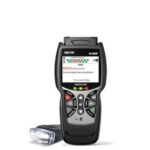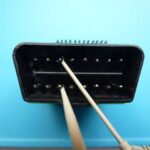Dealing with vehicle inspections can be frustrating, especially when your trusty 2010 Sprinter van throws unexpected curveballs. Many Sprinter owners have faced the dreaded “Inspection/Maintenance (I/M) not ready” error, which can lead to failing your state inspection. This issue often stems from the vehicle’s On-Board Diagnostics (OBD2) system not completing its self-tests, leaving certain monitors in an incomplete state. Understanding why this happens and how to resolve it is crucial to getting your Sprinter back on the road legally.
One common scenario involves clearing Check Engine Light (CEL) codes using an OBD2 reader. While this might seem like a quick fix for a CEL, it can inadvertently reset the OBD2 system’s monitors, including the I/M readiness monitors. These monitors need to run and complete their diagnostic cycles before they are considered “ready” for inspection. If you clear codes right before an inspection, you might find yourself in a situation where these monitors are not yet ready, leading to an inspection failure even if the original issue seems resolved.
For 2010 Sprinter models, like many vehicles, these monitors cover various emission-related systems, such as the catalytic converter, oxygen sensors, evaporative system, and EGR system. When these monitors are not ready, it signals to the inspection system that the vehicle’s emission control systems haven’t been fully evaluated. In some states, like Massachusetts, vehicles are allowed to have only one incomplete monitor to pass inspection. However, having multiple monitors “not ready” will result in a failure.
So, what can you do if your 2010 Sprinter fails inspection due to OBD2 monitor readiness? The key is to allow the vehicle to complete its drive cycles and for the monitors to reset themselves. Simply driving around town might not be sufficient. Often, a highway drive is necessary to fulfill the conditions required for these monitors to run their tests. Driving at consistent speeds on the highway allows the engine and emission systems to reach operating temperature and run through the necessary checks.
The experience of one Sprinter owner highlights this perfectly. Facing an inspection rejection due to two “I/M not ready” monitors, they initially tried driving around town with no success. Upon advice, they took their 2010 Sprinter on the highway. This highway driving immediately reset one of the monitors, likely the EGR monitor, allowing them to pass inspection on a re-test with only one monitor still incomplete.
For Sprinter owners, especially those with older models like the 2010, investing in an OBD2 reader is highly beneficial. These readers not only allow you to read and clear codes but also check the status of your I/M monitors. Before heading for an inspection, use your OBD2 reader to confirm that your monitors are ready. This proactive step can save you time, frustration, and a failed inspection. Knowing the status of your 2010 Sprinter’s OBD2 monitors empowers you to address potential issues before they lead to inspection problems.

